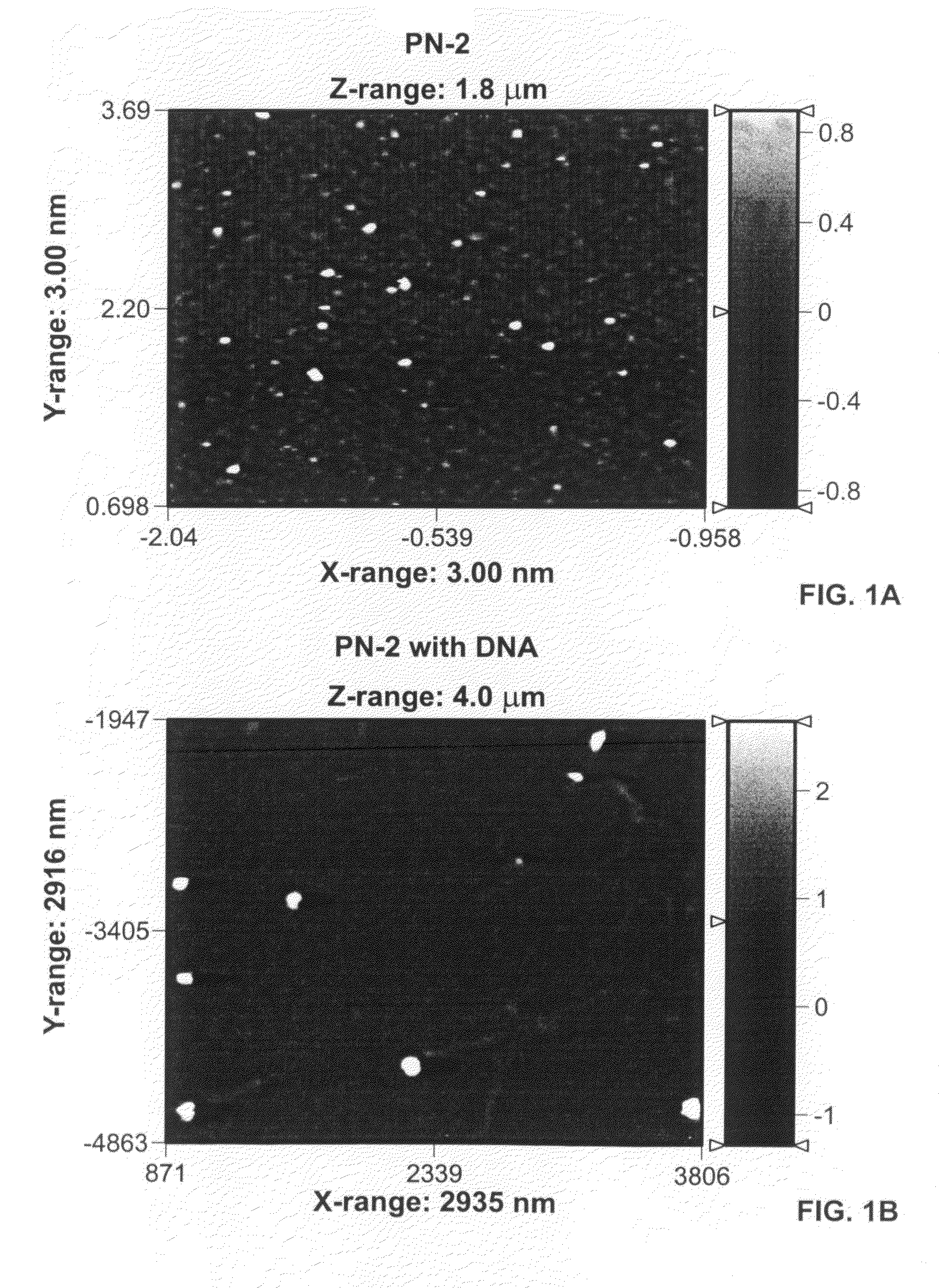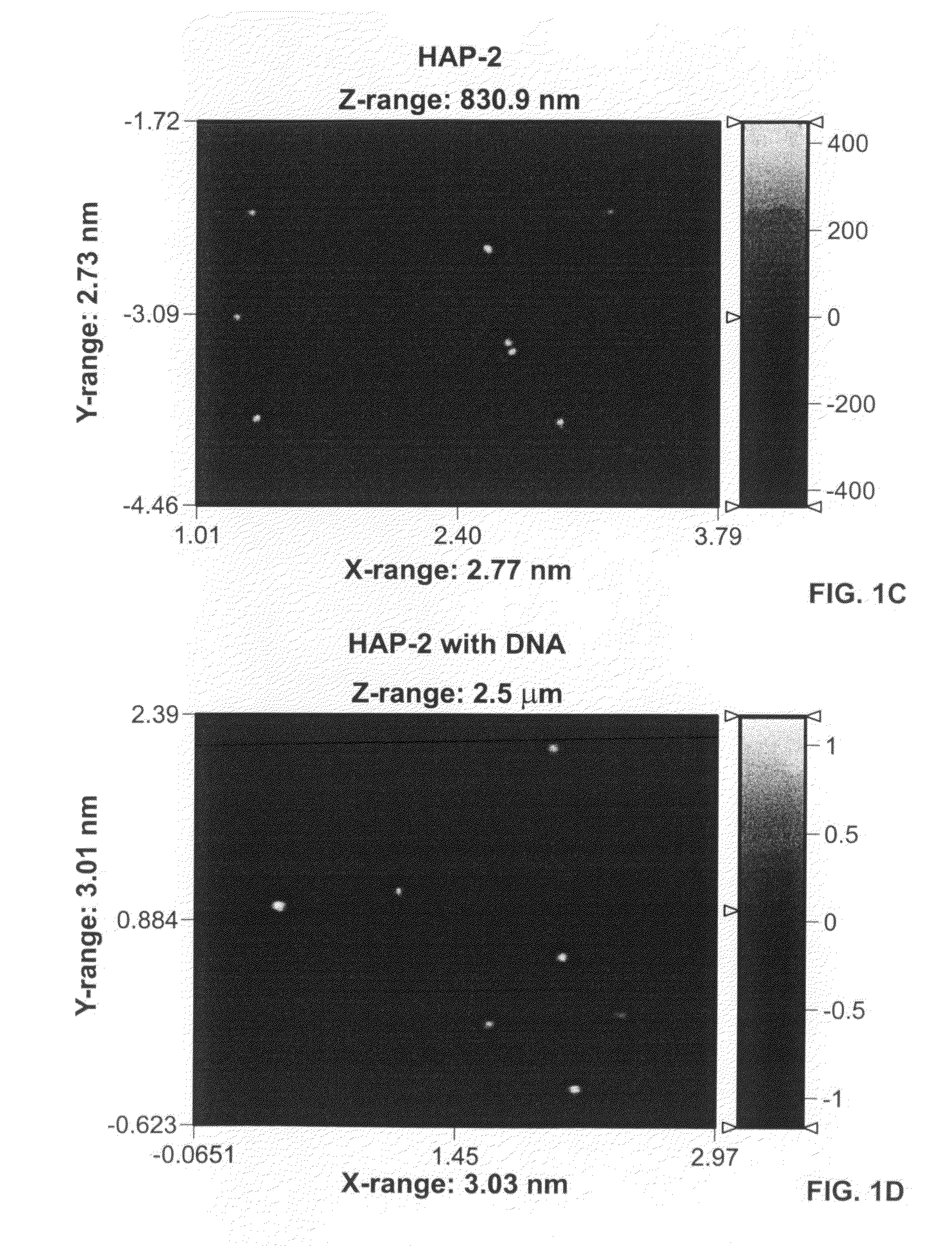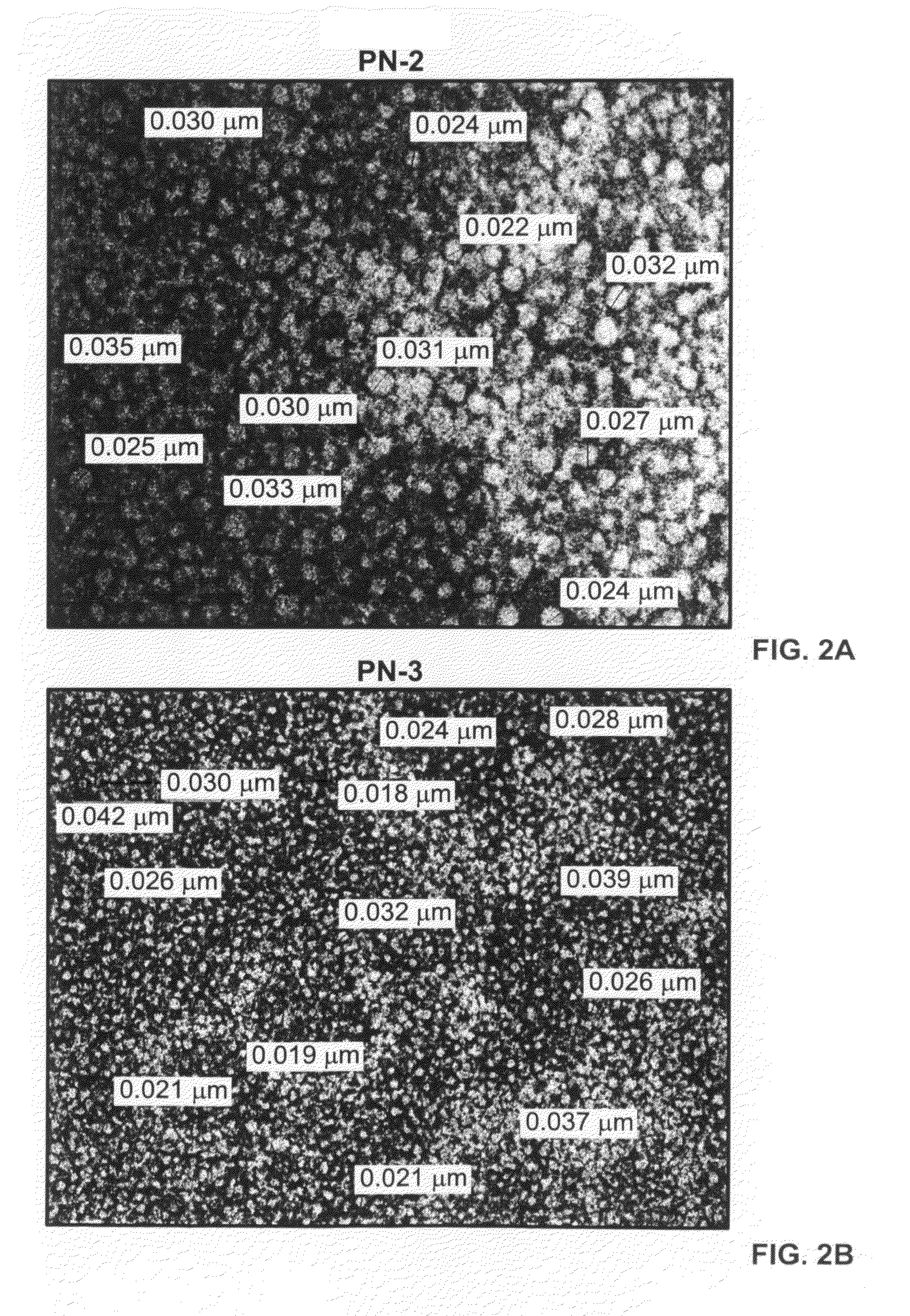Novel crosslinked pei nanoparticle based transfection agents for delivery of biomolecules
- Summary
- Abstract
- Description
- Claims
- Application Information
AI Technical Summary
Benefits of technology
Problems solved by technology
Method used
Image
Examples
example 1
[0084]The positive charge of cationic polymer polyethyleneimine (PEI) (Mw 1 kDa-800 kDa) was partially shielded on crosslinking with a homobifunctional hydrophobic reagent, with epoxide functionality, named 1,4-butanediol diglycidyl ether (bisepoxide). In order to substitute 5% amines of PEI, bisepoxide (11.08 μl, 1 μl / ml, dd water, 45° C.) was added dropwise to a pre-heated (45° C.) solution of PEI (100 mg, 1 mg / ml) with continuous stirring maintaining the temperature at 45° C. for 16 h. Then the volume of the reaction mixture was reduced to half on a rotary evaporator. The remaining solution was subjected to dialysis against water for 72 h with intermittent change of water. Thereafter, the solution was concentrated in a speed vac to obtain a white residue of nanoparticles (PN-1, 88 mg, ˜80% yield) as reported by Swami et al. (Biochemical and Biophysical Research Communications 362 (2007) 835-841.).
example 2
[0085]In an attempt to realize 10% substitution of amines in PEI, bisepoxide (22.16 μl, 1 μl / ml, dd water, 45° C.) was added dropwise to a solution of PEI (100 mg, 1 mg / ml), with continuous stirring and subsequently the reaction was carried out as described above.
example 3
[0086]With the purpose of substituting 15% amines of PEI, bisepoxide (33.24 μl, 1 μl / ml, dd water, 45° C.) was added dropwise to a solution of PEI (100 mg, 1 mg / ml), with continuous stirring. The reaction was carried out as described in example 2.
PUM
| Property | Measurement | Unit |
|---|---|---|
| Temperature | aaaaa | aaaaa |
| Fraction | aaaaa | aaaaa |
| Fraction | aaaaa | aaaaa |
Abstract
Description
Claims
Application Information
 Login to View More
Login to View More - R&D
- Intellectual Property
- Life Sciences
- Materials
- Tech Scout
- Unparalleled Data Quality
- Higher Quality Content
- 60% Fewer Hallucinations
Browse by: Latest US Patents, China's latest patents, Technical Efficacy Thesaurus, Application Domain, Technology Topic, Popular Technical Reports.
© 2025 PatSnap. All rights reserved.Legal|Privacy policy|Modern Slavery Act Transparency Statement|Sitemap|About US| Contact US: help@patsnap.com



